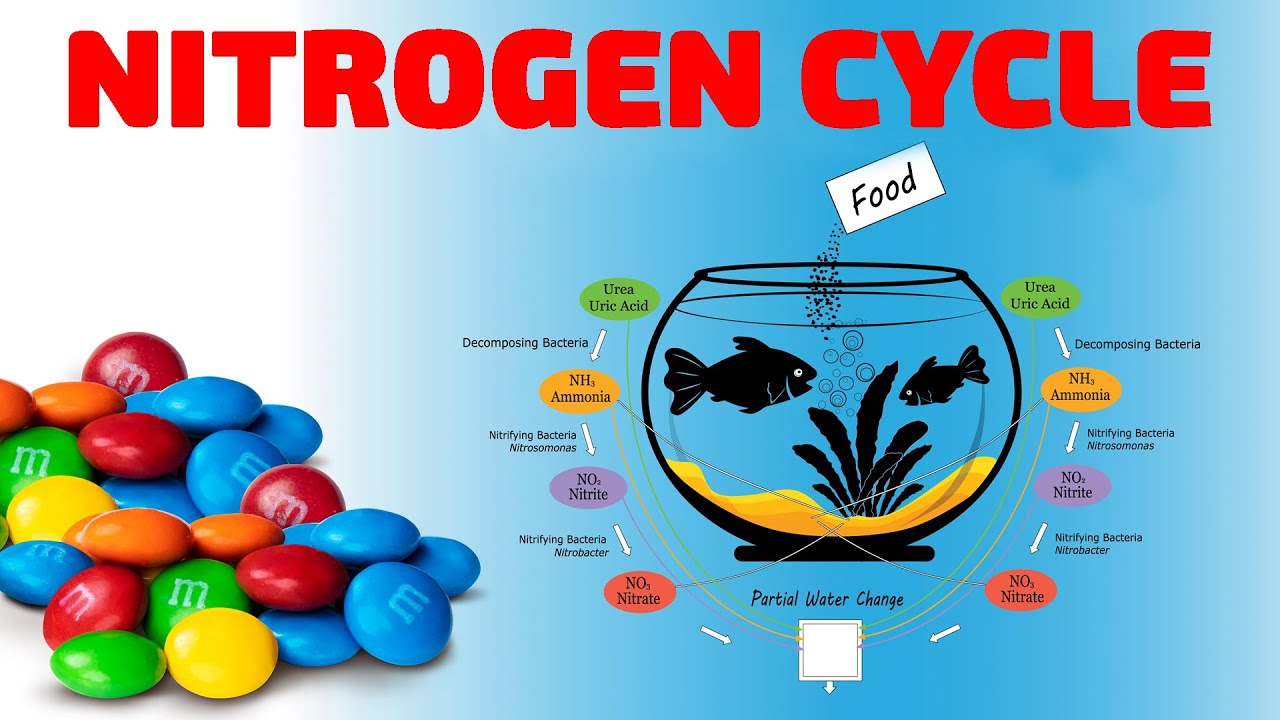How to Cycle an Aquarium
How to Cycle an Aquarium: A Complete Guide to the Nitrogen Cycle and Fishless Cycling
Setting up a new aquarium is an exciting journey, but before adding any fish, it’s essential to ensure the tank is biologically ready — a process known as cycling. Skipping this crucial step can lead to fish deaths, stress, and long-term instability.
In this article, we’ll cover:
- The nitrogen cycle
- Why cycling is important
- Step-by-step instructions for fishless cycling
- How to cycle with live plants
- Common troubleshooting tips
What is Aquarium Cycling?
Cycling refers to the biological process of cultivating beneficial bacteria that break down fish waste into less harmful compounds. Without this, toxic levels of ammonia and nitrite will build up, making the tank unsafe for aquatic life.
The Nitrogen Cycle Explained
The nitrogen cycle is a natural biochemical process crucial to every aquatic ecosystem.
1. Ammonia (NH₃/NH₄⁺)
Generated from fish waste, uneaten food, and decaying plant matter. Highly toxic to all aquatic life.
2. Nitrite (NO₂⁻)
Formed by Nitrosomonas bacteria converting ammonia. Still toxic and can interfere with oxygen transport in fish.
3. Nitrate (NO₃⁻)
Created when Nitrobacter or Nitrospira bacteria convert nitrite. Much less harmful but needs to be kept in check through water changes and plant absorption.
Why You Must Cycle Your Aquarium
Neglecting to cycle your tank can result in:
- Ammonia burns and gill damage
- Nitrite toxicity
- Weakened immune systems
- High fish mortality
Uncycled tanks are unstable, making them unsuitable for any aquatic life.
Fish-In vs. Fishless Cycling
| Method | Fish-In Cycling | Fishless Cycling (Recommended) |
|---|---|---|
| Uses live fish | Yes (fish exposed to toxins) | No (uses ammonia or food as waste) |
| Fish safety | Risk of illness or death | Humane and controlled |
| Maintenance | High (frequent testing, water changes) | Moderate (monitor until cycle completes) |
| Time to complete | 4–8 weeks | 2–6 weeks |
Conclusion: Fishless cycling is more ethical and reliable.
How to Cycle an Aquarium Without Fish
Step 1: Set Up the Tank
Include water, substrate, filtration, and a heater. Dechlorinate your tap water before starting.
Step 2: Add Ammonia or Food
Use pure ammonia (no additives) to raise levels to ~2–4 ppm, or add a pinch of fish food daily to simulate organic waste. Dr Tims is a popular Ammonia source for enthusiasts
Step 3: Test Water Parameters
Using a liquid test kit, track ammonia, nitrite, and nitrate over time. We recommend using API’s Freshwater Test kit for accuracy
Step 4: Observe the Cycle
You should see:
- Ammonia spike, then drop
- Nitrite rise, then drop
- Nitrate rise and stabilise
Step 5: Water Change
Once ammonia and nitrite are at 0 ppm, and nitrate is present, perform a 50–75% water change.
Step 6: Add Fish Gradually
Start with a few hardy fish, allowing bacteria colonies to adjust to the new bioload.
Cycling with Live Plants
Adding live plants during the cycling process offers multiple benefits:
How Plants Help the Cycle
- Absorb ammonia and nitrate directly, reducing toxicity
- Encourage bacterial colonisation on their surfaces
- Enhance oxygenation and water stability
Best Plants for New Tanks
- Java Fern
- Anubias
- Hornwort
- Amazon Sword
- Java Moss
Things to Keep in Mind
Plant-heavy tanks may complete the cycle faster or even establish a silent cycle where toxins never spike dramatically.
Avoid using chemical ammonia in densely planted tanks, as plants may not tolerate high ammonia levels.
Pro Tip: Consider a low-tech planted setup using root tabs or liquid fertilisers, which also helps beneficial bacteria thrive.
Troubleshooting Aquarium Cycling
Cycling doesn’t always go as expected. Here are common issues and how to solve them:
❌ No Ammonia Drop
Cause: Not enough bacteria, or ammonia source lacks potency
Fix: Add a bacteria starter or increase ammonia slightly (to 2–4 ppm)
❌ Nitrites Not Appearing
Cause: Bacteria not established
Fix: Ensure proper temperature (24–27°C), increase oxygenation, and check for chlorine in water
❌ Nitrates Not Rising
Cause: Cycle hasn’t progressed; bacteria missing
Fix: Add media from an established tank or bottled bacteria supplement
❌ Cycle Taking Too Long
Cause: Low temperatures, over-cleaning, insufficient bacteria
Fix: Be patient; avoid changing filter media or doing large water changes mid-cycle
❌ Cloudy Water
Cause: Bacterial bloom (normal early in cycle)
Fix: Leave it alone — it clears up as the bacteria stabilise
Tips to Speed Up the Cycling Process
- Add bottled nitrifying bacteria (e.g., Tetra SafeStart, API Quick Start)
- Use filter media or substrate from a mature aquarium
- Keep tank temperature between 24–27°C
- Ensure good water movement and aeration
- Avoid cleaning the filter or replacing media during cycling
Final Thoughts
Properly cycling your aquarium is one of the most important things you can do to ensure the health and wellbeing of your fish. While it requires patience, the result is a stable, safe, and thriving environment.
Whether you choose to cycle with or without live plants, always opt for a fishless method to avoid unnecessary stress or harm to your aquatic pets.


